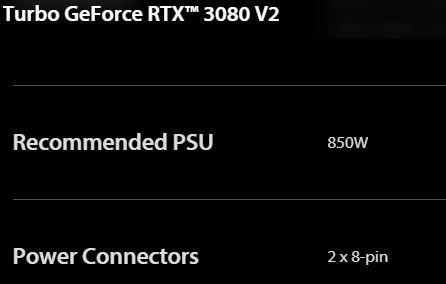If you are new to PC building or planning on upgrading your GPU, you can get confused about whether a graphics card is compatible with your motherboard and PC.
There is no hard and fast rule to check whether a graphics card is compatible with your PC. Instead, you have to check a couple of factors, some of which are important while others are recommended, to see if the GPU will work with your PC optimally or not.
For instance, you have to check whether you have a free PCIe x16 slot, sufficient power, and sufficient space in the chassis for the graphics card.
For the GPU to run optimally, you must check the PCIe version of the GPU and the motherboard. Ideally, you must ensure your CPU does not bottleneck your graphics card’s performance.
The good news, however, is that due to the flexibility of PC interfaces, you should be able to run the latest graphics card on a PC that is even a decade old (given that enough power is supplied).
Another question we will explore below is whether you can optimally run the new graphics card.
Also Read: How to Check What Motherboard You Have?
TABLE OF CONTENTS
How to Know if Graphics Card is Compatible With Your Motherboard?
To check if a graphics card is compatible with your motherboard or PC, you have to check for three important and two optional (but ideal) characteristics and specifications:
- Important: A Free PCIe x16 Slot
- Important: Sufficient Power and PSU Cables
- Important: Enough Space in the Case/Chassis
- Ideal: The PCIe Version of the Motherboard and GPU Must Match
- Ideal: A CPU That Does Not Bottleneck Your GPU
Let us explore each of these points below.
1. A Free PCIe x16 Slot
For starters, ideally, you need to ensure that your motherboard has a free PCIe x16 slot with 16 PCIe lanes.

Image: A PCIe x16 slot with 16 lanes
PCIe lanes are information highways for connecting PCIe devices to the CPU. The more lanes a slot has, the more demanding card you can install.
GPUs generate a lot of data and thus ideally demand an x16 slot with 16 lanes – but they can also work on a PCIe x16 (x8) slot. If you are confused about this, read on.
Also Read: What are PCIe Slots?
A PCIe x16 Slot Can Have Different Lane Counts.
Not all PCIe x16 slots are created equally. Some feature a full 16 lanes, and others may feature eight or even four lanes.
Have a look at the motherboard below. You can see that the bottom x16 slot, despite having the full size, features only four lanes – which is far less than the ideal requirement of 16 lanes by a GPU.
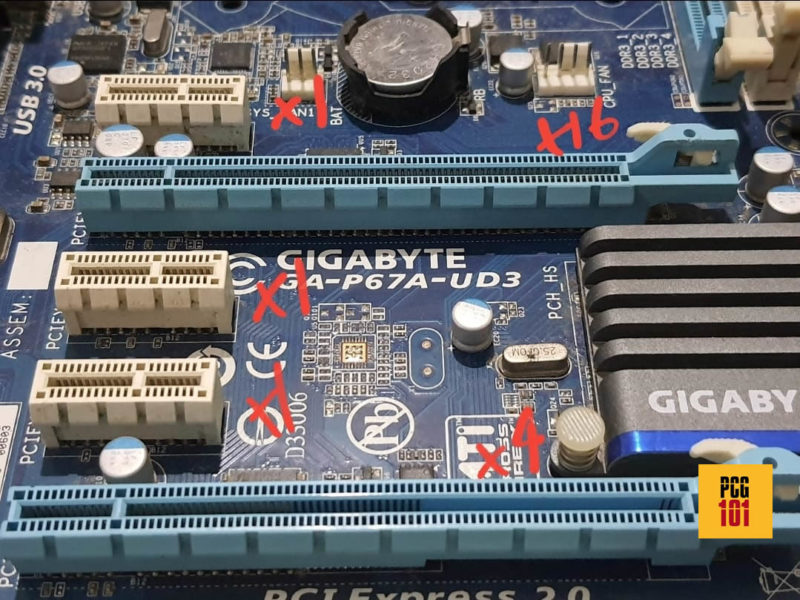
Image: PCIe Slots for adding expansion cards. Note that the bottom x16 slot actually only has four lanes. You can figure this out by reading the spec sheet of the motherboard. You would use the top x16 slot for your GPU in the case of this motherboard.
Hence installing a GPU on this slot is not recommended at all. In fact, NVIDIA graphics cards have a minimum requirement of an x16(x8) slot or eight lanes. AMD graphics card can work on x16(x4) slot, but its performance will be heavily bottlenecked when working on four lanes.
Also Read: Can a Motherboard Bottleneck a GPU?
There are two studies that I would like to point to for you to understand the impact different lane counts can have on GPU performance.
The first is by Gamer Nexus. According to their study for gaming, if you have a SINGLE graphics card, using it on either x16 or x8 would have minimal impact.
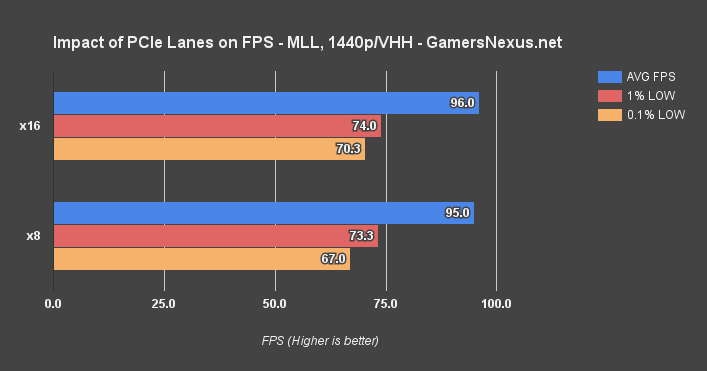
Image: GPU Performance on Gaming on x16 and x8. Source: Gamer Nexus
The second study is by Pudget Systems, which is a bit more comprehensive. They tested a single and dual graphics card setup on x16/x16, x16/x8, and x8/x8 configurations.
According to their study, depending upon your applications, there can be a great impact. For gaming, the impact is nominal (within 3-5%), but for professional software and benchmark engines, the performance drop can be as high as 30%.
TL;DR: Always use the top PCIe x16 slot for your graphics card, as it almost always features the full 16 lanes.
Also Read: Does it Matter Which PCIe Slot I Use?
2. Sufficient Power and PSU Cables
The second important aspect to look at is the power requirement of the graphics card and making sure your Power Supply Unit can deliver it.
Newer and beefier graphics cards have a very heavy power requirement. To figure this out, you have to check out the spec sheet for your GPU.
Image: NVIDIA RTX 3080 Power Requirement and Connectors Required. Source: ASUS
Almost all graphics cards have a recommended PSU given. The ASUS TURBO V2 RTX 3080 recommends having a PSU with a rating of 850 Watts.
Recommended PSU is NOT Equal to Consumed Power
The recommended PSU rating does not relate to the power the graphics card consumes. It relates to the Power Supply Unit ideal for the entire build and the rest of the components, such as the motherboard, CPU, RAM, drives, and cooling solutions.
To figure out the power requirement of the GPU, you have to look at the Power Connectors it requires. The GPU shown above has a requirement of 2 x 8-pin connectors.
Each 8-pin connector provides 150 Watts of power, and the PCIe slot itself provides 75 Watts of power. Therefore the graphics card above requires 375 Watts of power (2x150W + 75W)
The following chart summarizes power requirements based on the power connectors specified.
| PCIe x16 (75W) | 6 Pin Cable (75W) | 8 Pin Cable (150W) | 12 Pin Cable (600W) | Max Power Consumed |
|---|---|---|---|---|
| 75W | 0 | 0 | 0 | 75W |
| 75W | 1 x 75W | 0 | 0 | 150W |
| 75W | 0 | 1 x 150W | 0 | 225W |
| 75W | 2 x 75W | 0 | 0 | 225W |
| 75W | 1 x 75W | 1 x 150W | 0 | 300W |
| 75W | 0 | 2 x 150W | 0 | 375W |
| 75W | 1 x 75 | 2 x 150W | 0 | 450W |
| 75W | 0 | 3 x 150W | 0 | 525W |
| 75W | 0 | 0 | 1 x 600W | 675W |
You Must Have Sufficient All the Required Cables
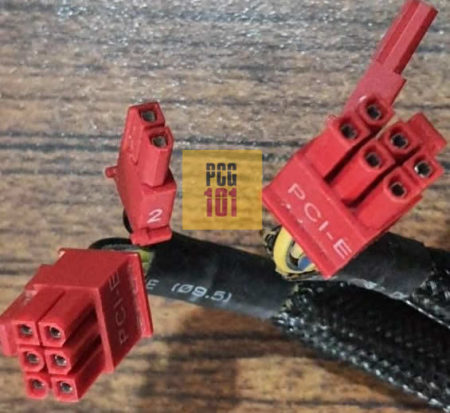
Image: PSU must have all the required power supply cables
Your Power Supply Unit must have all the required cables to power up the GPU.
For instance, if your GPU requires 2 x 8-pin connectors, you must have both 8-pin connectors. You cannot have only one plugged in or connected with an 8-pin plug and the other with a 6-pin plug.
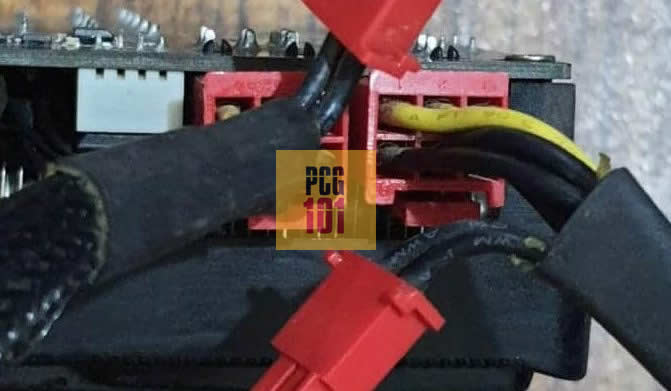
Image: This GPU requires 2 x 6-pin. Both of them are connected
If your PSU does not have the necessary plug, you must get adapters or splitters.
Understanding the power and cable requirements is essential for knowing if a graphics card is compatible with your motherboard and PC.
Also Read: What are PCIe Cables Used For?
3. Enough Space in the Case
The PC case should have sufficient space to accommodate your graphics card.
In addition to that, you must also note that sometimes installing a graphics card can render another PCIe slot inaccessible.
Therefore, you may have to move your connected devices around.
The following image shows a connected graphics card blocking TWO x1 slots underneath.
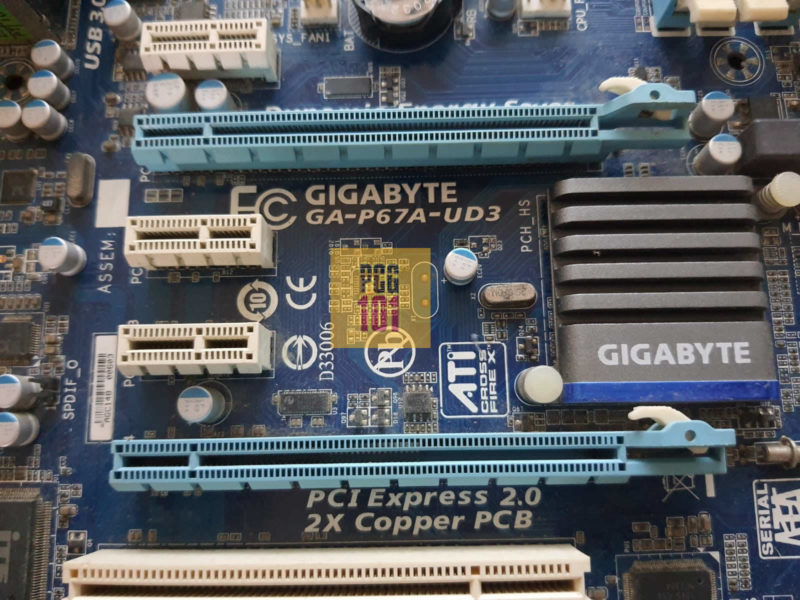
Image: PCIe slot configuration
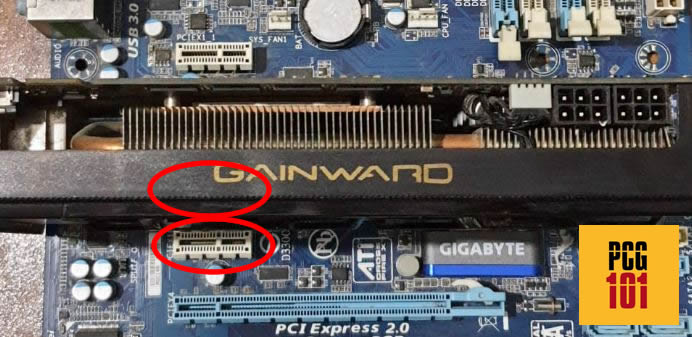
Image: The graphics card is blocking two x1 slots underneath it
As such, if you have additional cards installed, such as a WiFi card, on the x1 slot, they will need to be moved to different slots, and if no slots are available, then you may have to sacrifice an expansion card by removing it.
Sizes of Graphics Card
There are various sizes of graphics cards identified by how many PCIe slots are worth of space they occupy. So a graphics card with one profile occupies 1 PCIe slot space. This would not block any other slot. Similarly, a 2-profile GPU would occupy 2 PCIe slot worth of space.
Here is a breakdown of the different sizes you can find for GPUs.
- Low Profile: 1 and 1.5 slot
- Average: 2 and 2.5 slot
- Large: 2.7 and 3.0 slot
You can figure out the size of the GPU before purchasing by looking at its spec sheet.

Image: ASUS Turbo Geforce RTX 3080 V2 occupies two slots
Some smart motherboard designs often have PCIe slots intended for GPUs at a distance from other PCIe slots so that nothing is blocked.
Also Read: How to Check Which Graphics Card is Being Used?
4. Ideal: The PCIe Version of the Motherboard and GPU Must Match
This is also an important consideration, particularly nowadays, as PCIe 4.0 is becoming widespread and PCIe 5.0 is approaching.
With every PCIe version, the transfer speed of the slot doubles. A PCIe x16 v4.0 slot can transfer a lot more data than a PCIe x16 V3.0 slot.
Hence, the devices built for the v4.0 PCIe protocol can be much more powerful compared to 3.0 devices.
Which is precisely what you should take note of. Since most older systems still conform to version 3.0, installing a newer PCIe 4.0 GPU on a PCIe 3.0 slot can present performance bottlenecks.
You can generally figure out the PCIe version of your GPU by checking out its spec sheet—essentially, the NVIDIA RTX 3000 series and AMD Radeon RX 6000 series and newer support PCIe 4.0.
PCIe is Backwards Compatible – PCIe Version and Performance Bottlenecks.
Again, while the PCIe interface is backward compatible – meaning newer PCIe 4.0 cards CAN work on older 3.0 slots, it is ideal that you must match the version of the graphics card and the slot.
PudgetSystems.com actually conducted a study on this whereby they tested an RTX 3090 (V4.0 device) and a Titan RTX (v3.0 device) on PCIe 1.0, 2.0, 3.0, and 4.0 x16 slots.
The following graphics show the results:
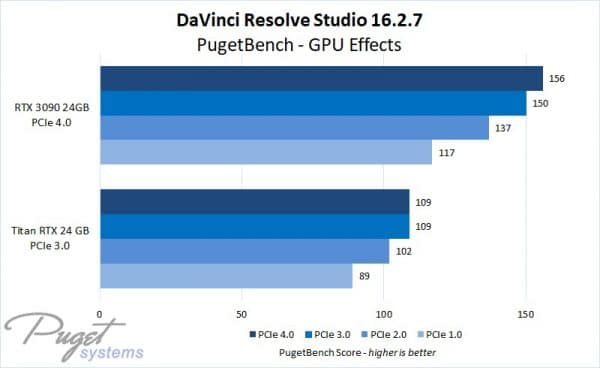
Image: PudgetSystems.com. Comparison of how RTX 3090 and Titan RTX perform on different PCIe generations. A significant impact can be seen on DaVinci Resolve’s (video editing software) performance when using the cards in older PCIe slots.
It is clear that a PCIe 4.0 GPU (RTX 3090) gains performance if installed in a PCIe 4.0 slot but loses performance when installed in older slots.
At the same time, you can see that a PCIe v3.0 GPU (Titan RTX) does not gain performance if installed in a newer v4.0 slot.
Also Read: Can You Use AMD GPU with Intel CPU?
5. Ideal: A CPU That Does Not Bottleneck Your GPU
Finally, you must make sure that there is parity between the graphics card and the CPU.
If you have a high-end NVIDIA RTX 3080, pairing it with a mere Intel Pentium CPU would be unwise. You should at least get a Core i5 or Ryzen equivalent.
The following video shows how the performance of a graphics card gets impacted when using weaker CPUs.
A CPU may not have a direct link for knowing if a graphics card is compatible with your motherboard, but pairing the right CPU matters.
Also Read:
Final Words
So how to know if a graphics card is compatible with your motherboard and PC?
Well, given the flexibility and modular design of motherboards, it is highly probable that your graphics card would be compatible with your motherboard, even if it’s a decade old.
But the better questions to ask are how to know if your GPU will work OPTIMALLY on your motherboard or how to make the right PC build with a graphics card. Because here, you have to take note of bottlenecks caused by the PCIe version, PCIe lanes, and CPU and also consider the size and power requirement.
Also Read: How to Check SSD Compatibility With Laptop or Desktop?
Frequently Asked Questions
1. How do I check the power supply requirements for my graphics card?
Checking the power supply requirements for your graphics card is an important step before installing it.
The power supply requirement is usually listed on the graphics card’s product page, or in the user manual that comes with the card.
You can also use online power supply calculators to determine your system’s total power requirements, and compare it with your power supply’s rated capacity.
2. Can I use an older graphics card on a newer motherboard, or vice versa?
In most cases, you can use an older graphics card on a newer motherboard, or vice versa. However, it’s important to check the compatibility of the card with the motherboard’s PCIe slot and power supply requirements. If the card and the motherboard have different PCIe versions, the card may not work at full speed, or at all.
3. How do I check if my motherboard supports multiple graphics cards?
To check if your motherboard supports multiple graphics cards, look for the number of PCIe slots on the motherboard. Most motherboards that support multiple graphics cards have at least two PCIe x16 slots.
You should also check the motherboard’s user manual or product page for details on the supported configurations for multiple graphics cards.
4. How do I update my motherboard’s BIOS to ensure compatibility with a new graphics card?
To update your motherboard’s BIOS, you’ll need to download the latest BIOS firmware from the motherboard manufacturer’s website. Follow the manufacturer’s instructions for updating the BIOS, as the process can vary depending on the motherboard. It’s important to note that updating the BIOS can be risky and should only be done if necessary.
5. Can I use a graphics card from a different brand than my motherboard?
Yes, you can use a graphics card from a different brand than your motherboard, as long as the card is compatible with your motherboard’s PCIe slot and power supply requirements. It’s also important to ensure that the card is compatible with your other system components, such as the CPU and RAM.

